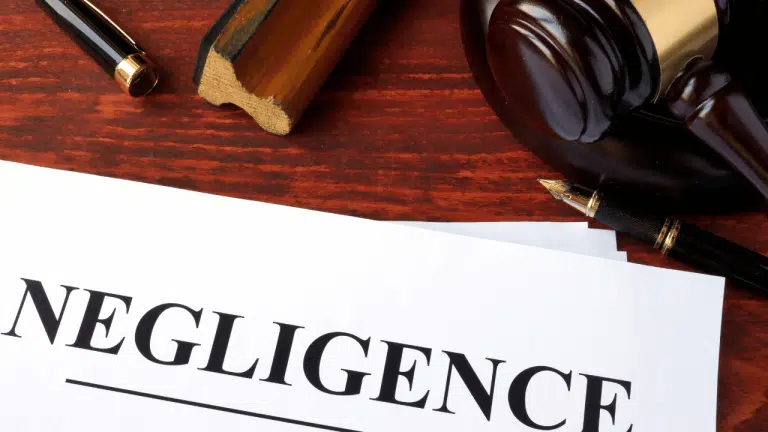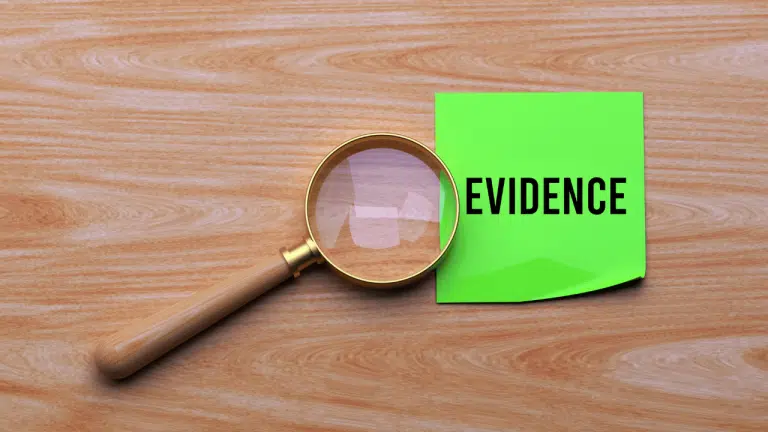Getting into a motorcycle accident can be life changing.
It can result in injuries that can potentially change your life for better or worse (most of the time for the worse). I have personally known people who have died or lost an arm due to a motorcycle or dirt bike accident at a young age.
Depending on what happens, there can be a number of different things to take into consideration after you may get into a motorcycle accident.
The most important thing to look at is establish negligence in an accident and determine who is actually at fault.
When you and an attorney can establish negligence, it is not only crucial not only for insurance claims but also for taking action against those who have wronged you.
Understanding the principle of negligence is not only important to potentially building a stronger case in court, but also maximizing your potential compensation to pay for your medical bills after an accident.
But how can you use the principle of negligence to your advantage? Let’s find out.
What Is Negligence?

According to Cornell Law, “negligence is the failure to behave with the level of care that a reasonable person would have exercised under the same circumstances”.
In the context of a motorcycle accident, there are five elements that are typically required to prove negligence in a court of law which include:
- The existence of a legal duty (an obligation created by law or contract) that the defendant owed the plaintiff.
- In the case of a motorcycle accident, the defendant would be the person who caused the accident, and the plaintiff would be the person who is harmed/who is taking legal action against the defendant.
- The defendant’s breach of that legal duty.
- This legal duty would be related to laws on the road related to motorcycle safety.
- Physical or emotional harm to the plaintiff.
- This harm can be calculated by determining medical bills, looking at the pictures and damages from vehicles involved. There are also ways you can quantify emotional damages, such as pain and suffering.
- The defendant’s actions are the proximate cause of harm to the plaintiff.
- This principle means that what the defendant did directly led to the plaintiff’s injuries or emotional distress. In other words, there needs to be physical evidence that another car directly caused a motorcycle accident.
- Defendant’s actions are the cause-in-fact of harm to the plaintiff.
Evidence To Gather After A Motorcycle Accident

To establish negligence effectively, you need to gather as much evidence as possible. The types of evidence that are looked at in a court of law are often physical or digital form.
An example of a physical piece of evidence are photographs, while digital forms of evidence can be recordings or phone videos.
Here are some examples of effective evidence that can be gathered:
Police Reports
To start off, a police report is a formal document that focuses on the timeline and facts of an incident, such as a deadly motorcycle accident.
These reports are used specifically for the police department, the victim of an injury or a crime, people who work in a court, and local law enforcement.
By using a properly filed police report, it can provide valuable information and evidence regarding the accident’s details and initial assessments of fault.
The primary point of police reports is to showcase the unbiased facts of an accident or crime and get to the point as soon as possible.
Witness Statements
Second, an eyewitness testimony is when a person witnesses a crime and can potentially recall what happened. However it’s important to be aware that your memory is not 100% reliable, and that your memory can be corrupted for various reasons.
Although eyewitness testimony can be a strong suit in a court of law, it’s important to consider that a witness’s testimony may not always be accurate, and if a witness is proven giving false testimony, that could be detrimental to the strength of your case.
Accident Scene Photos & Videos
Photographs of the accident scene are the most important piece of evidence that can strengthen your case after a motorcycle accident.
A photograph has the potential to showcase your injuries, the damage to your vehicle, as well as showing airbags being deployed.
If available, surveillance footage from nearby businesses or traffic cameras can provide objective evidence of the accident.
Medical Records
Having comprehensive medical records can demonstrate the extent of your injuries and their connection to the accident. If you can, try to obtain medical records that are dated directly after your date of the accident.
Having records can directly prove in a court of law that your injuries did not happen prior to a motorcycle accident.
What Is The Degree of Negligence That Is Shared?
It’s important to note that in some cases, both parties involved in the accident may share a degree of negligence. Many jurisdictions follow the principle of comparative negligence, which means that each party’s degree of fault will be assessed.
Depending on your jurisdiction, your recovery may be reduced based on your level of responsibility for the accident.
How An Attorney Can Help Your Case

Establishing negligence and pursuing a personal injury claim after a motorcycle accident can be a complex process. It’s highly recommended to consult with an experienced Seattle motorcycle accident attorney who specializes in these cases.
An attorney can:
- Evaluate your case: They will review the evidence, assess liability, and advise you on the strength of your claim.
- Negotiate with insurance companies: Attorneys are skilled in negotiating with insurance companies to secure fair settlements.
- Litigate if necessary: If a fair settlement cannot be reached, your attorney can take your case to court and advocate for your rights.
The Importance of Establishing Negligence
Establishing negligence after a motorcycle accident is essential to secure the compensation you need for medical bills, lost wages, and pain and suffering.
By understanding the elements of negligence, gathering evidence, determining liability, considering comparative negligence, and seeking legal assistance, you can navigate the process more effectively and increase your chances of a favorable outcome.
Remember, safety should always be a priority when riding a motorcycle, but when accidents happen, knowing your rights and options is crucial.





